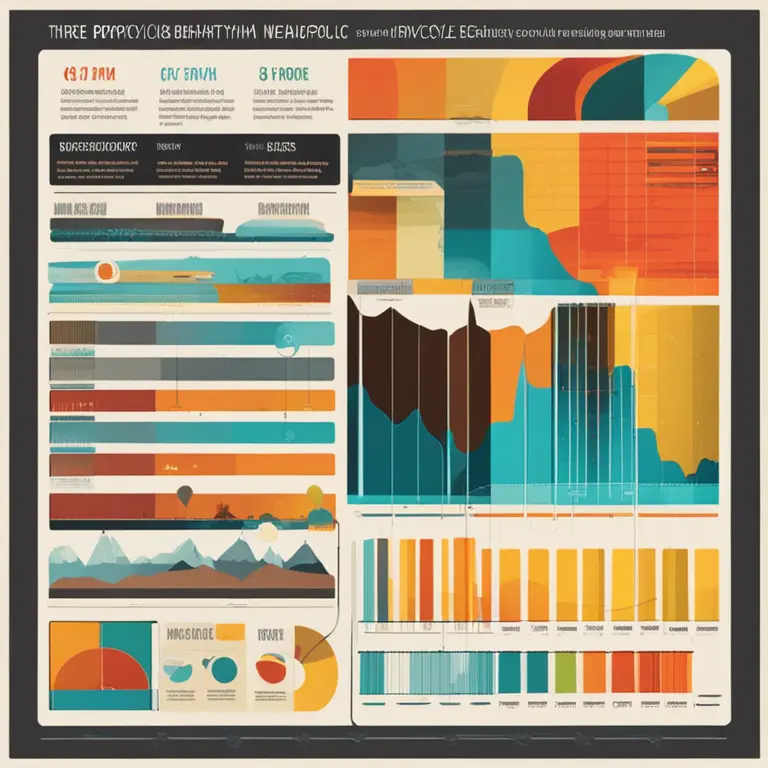
Biorhythm Cycles Explained: Biological Rhythms Overview
An insightful guide to biorhythms, detailing their types, significance, and impact on human life and well-being.
article by Adrian Wallace
Introduction to Biorhythms
Biorhythms are the rhythmic cycles our bodies and minds naturally follow, believed to influence various aspects of our physical, emotional, and intellectual capabilities. The concept, though lacking strong scientific endorsement, has piqued the interest of those looking for personalized insights into their well-being. Derived from Greek words ‘bios’ meaning life and ‘rhythmos’ meaning regular recurring motion, biorhythms chart the rise and fall of certain faculties within set time periods, suggesting times of strength and vulnerability.

Core Biorhythms and Periodicities
There are traditionally three primary biorhythm cycles: the Physical cycle of 23 days, the Emotional cycle of 28 days, and the Intellectual cycle of 33 days. These cycles begin at our birth and ebb and flow in positive (high phase), negative (low phase), and neutral periods. Advocates believe by tracking these, one can predict their times of peak performance, creativity, as well as moments of potential stress or poor judgement.

Interpreting Your Biorhythm Chart
Interpreting biorhythm charts has become increasingly popular, and modern analysts often employ software that takes your date of birth as input to plot your personal cycles. These charts visualize the intersection of your biorhythm cycles, allowing you to assess when you may be within critical days—a time of change or instability between the high and low phases of any cycle.

Scientific Perspective and Studies
The scientific community remains skeptical about biorhythms, often classifying them as pseudoscience due to the lack of empirical evidence. However, some studies suggest a correlation between biorhythmic patterns and certain biological processes or outcomes. It's integral for followers to utilize biorhythm information as a supplementary insight rather than unequivocal fact when considering it in their personal or professional decision-making.

Biorhythms in the Digital Age
As we advance into 2024 and beyond, the accessibility to biorhythm analysis has expanded, especially with the rise of mobile apps and online platforms. Users can now easily monitor their cycles with a touch of a button, integrating this ancient concept with today's digital lifestyle. Emerging technologies also propose to enhance the accuracy and relevance of biorhythm data, potentially heightening interest in this area.
Practical Uses of Biorhythms
Some individuals incorporate biorhythm readings into their daily lives to optimize outcomes—whether it's choosing a favorable day for important events, improving relationships by understanding emotional cycles, or enhancing productivity by aligning tasks to intellectual rhythms. While these applications are subjective and individual results vary, they underscore the personal value that some derive from this holistic system.
A Balanced Viewpoint
As we consider the role of biorhythms in our lives, it is essential to maintain a balanced viewpoint, embracing the potential for self-awareness while acknowledging the limits of predictive accuracy. Whether or not one sees significance in these cycles, understanding biorhythms can serve as a tool for reflection and an opportunity to harmonize with the natural ebbs and flows of our biological makeup.
Published: 1/30/2024
Modified: 1/30/2024
More predictions
Come back here soon to learn more about yourself and your future


Between Biorhythm & Compatibility: Sync Your Cycles
Discover how biorhythm compatibility can impact relationships and find harmony by syncing your physical, emotional, and intellectual cycles.


The Rhythms Within Science: A Guide to Biorhythms
Delve into the science of biorhythms to grasp how the physiological cycles influence our lives. This guide breaks down the complexity of biorhythmic patterns.


The Rhythms Concept: A Guide to Biorhythms
Discover the intriguing concept of biorhythms: the cyclic patterns influencing our physical, emotional, and intellectual states.